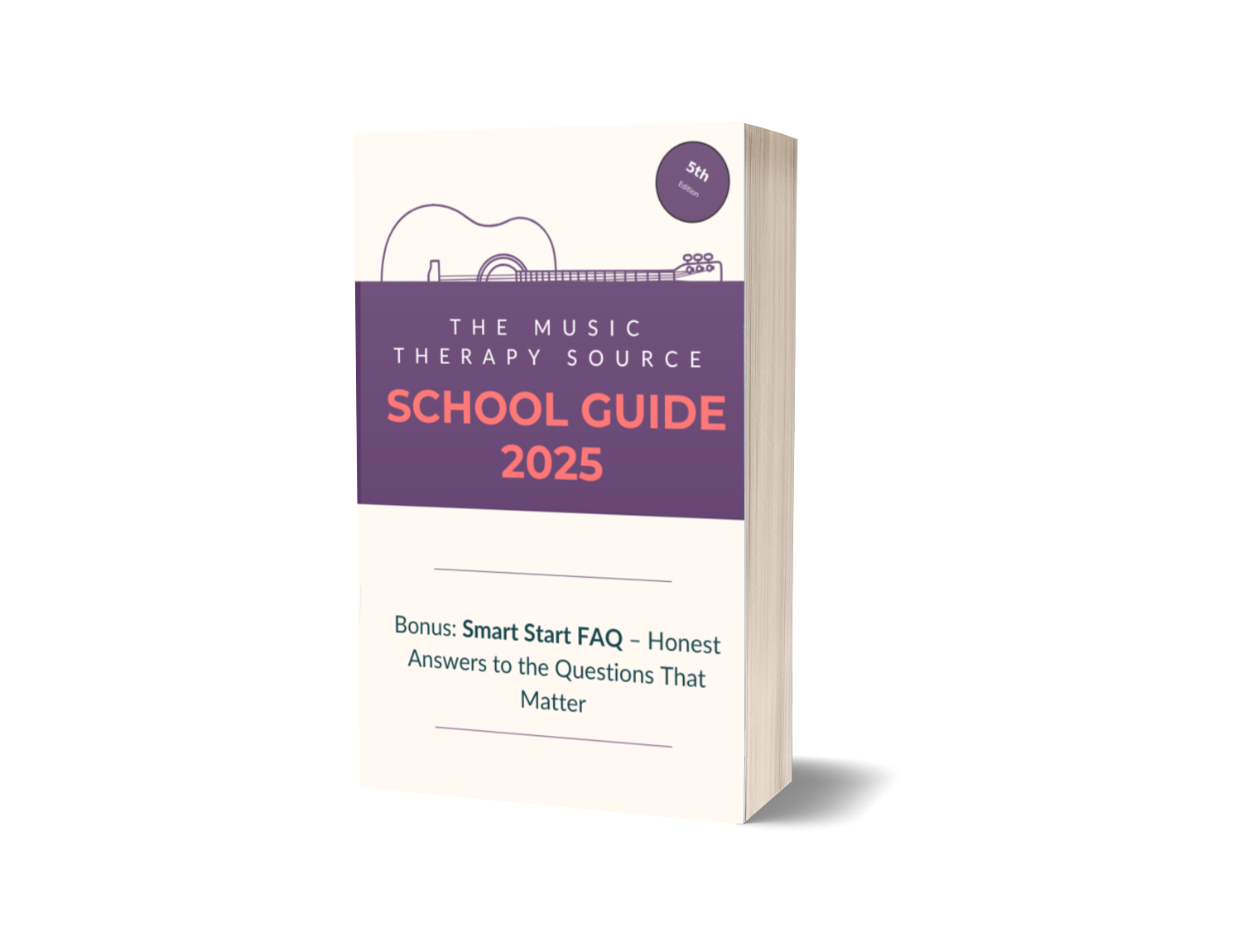What is Music Therapy?
After reading this article, I hope you’ll be able to answer the question: “What is music therapy?”
A board-certified music therapist (MT-BC) develops and implements music-based interventions to meet needs in physical, social, cognitive, and emotional functioning.
To become an MT-BC, a therapist must complete an AMTA-approved academic program. This includes training in musicianship, psychology, physiology, and music therapy techniques. Students also complete 1,200 hours of supervised clinical experience before taking the board certification exam.
Music Therapy Defined
Music therapy is an allied health profession—distinct from medicine, dentistry, nursing, and optometry—where clinicians use music to support therapeutic change. Other allied health fields include physical therapy, occupational therapy, speech-language pathology, and art therapy.
Music therapists implement music-based interventions designed to help clients meet a variety of goals, including:
Physical goals
Social goals
Communicative goals
Emotional goals
Cognitive or academic goals
According to the American Music Therapy Association, music therapy can:
Promote wellness
Manage stress
Alleviate pain
Express feelings
Enhance memory
Improve communication
Promote physical rehabilitation
Key Characteristics
Music therapy often uses live music because it allows for flexibility and interaction. A music therapist must therefore be a highly skilled musician with a strong background in:
Psychology and counseling
Clinical techniques
Knowledge of diseases and disabilities
Multiple music therapy approaches
Where Music Therapists Work
Hospitals (including pediatric hospitals)
School systems
Psychiatric hospitals
Prisons and forensic settings
Nursing homes
Rehab centers
Veteran’s hospitals
Private practice
To become a Music Therapist–Board Certified (MT-BC), one must:
Complete the required coursework
Finish 1,200 hours of clinical training (typically through internship)
Pass the board certification exam
Check out the Music Therapy School Guide!
Save hours of research and compare all your options today!
